Do you have the privilege of owning a Maine Coon? These grand and impressive cats are renowned for their luxurious, shaggy fur, tufted ears, and adorable paw tufts that can make anyone swoon. As pet parents, we all want to ensure our furry companions are in good health and content. This leads us to ask; should you cut Maine Coon paw tufts?
Before we delve into this topic, let’s first understand what paw tufts are. These are the fluffy clumps of fur that grow between a Maine Coon’s toes. Not only do they add an extra dose of cuteness, but they also serve a significant purpose. Paw tufts act as insulation for their paws, keeping them warm during colder temperatures while providing additional traction on surfaces.
As a Maine Coon owner, you may have come across varying opinions about cutting paw tufts. Some people believe that trimming them helps prevent hairballs and matting while others argue that it’s unnecessary and counterproductive. The truth is there’s no straightforward answer when it comes to whether or not you should cut Maine Coon paw tufts.
In this blog post, we’ll explore the advantages and disadvantages of cutting Maine Coon paw tufts to help you make an informed decision. So sit tight, grab your favorite beverage, and let’s embark on an exciting journey into the world of Maine Coon paw tufts.
a. What Are Maine Coon Paw Tufts?
These tufts of fur that grow between their toes are not just for show, but serve an important purpose for your beloved feline friend.
Maine Coon paw tufts, also known as “snowshoe” hairs, play a crucial role in helping these cats walk on soft surfaces like snow without sinking in. These tufts of hair are usually longer than the rest of the coat and can be up to 2 inches in length. They are also more robust than the rest of the hair on the cat’s body, providing insulation to keep their paws warm in cold temperatures and protecting their paws from harsh terrain.
A remarkable feature of the Maine Coon paw tufts is that no other cat breed has them quite like this. They come in various colors, depending on the cat’s coat color, but they’re usually longer and more resilient than other parts of their coat. For instance, if a Maine Coon has a black coat, their paw tufts will usually be black as well. However, some cats may have white or lighter-colored paw tufts even if their coats are dark.
While some owners may be tempted to trim or cut these tufts for aesthetic reasons, it’s essential to avoid doing so as it can cause discomfort and pain for your cat. It can even interfere with their natural ability to grip surfaces and increase the risk of injury or infection.
Regular grooming is vital in maintaining your Maine Coon’s paw tufts and overall health. Brushing their fur daily and paying special attention to the areas around their paws and toes can prevent matting or tangles. Professional grooming is also recommended to keep your cat’s fur healthy and looking its best.
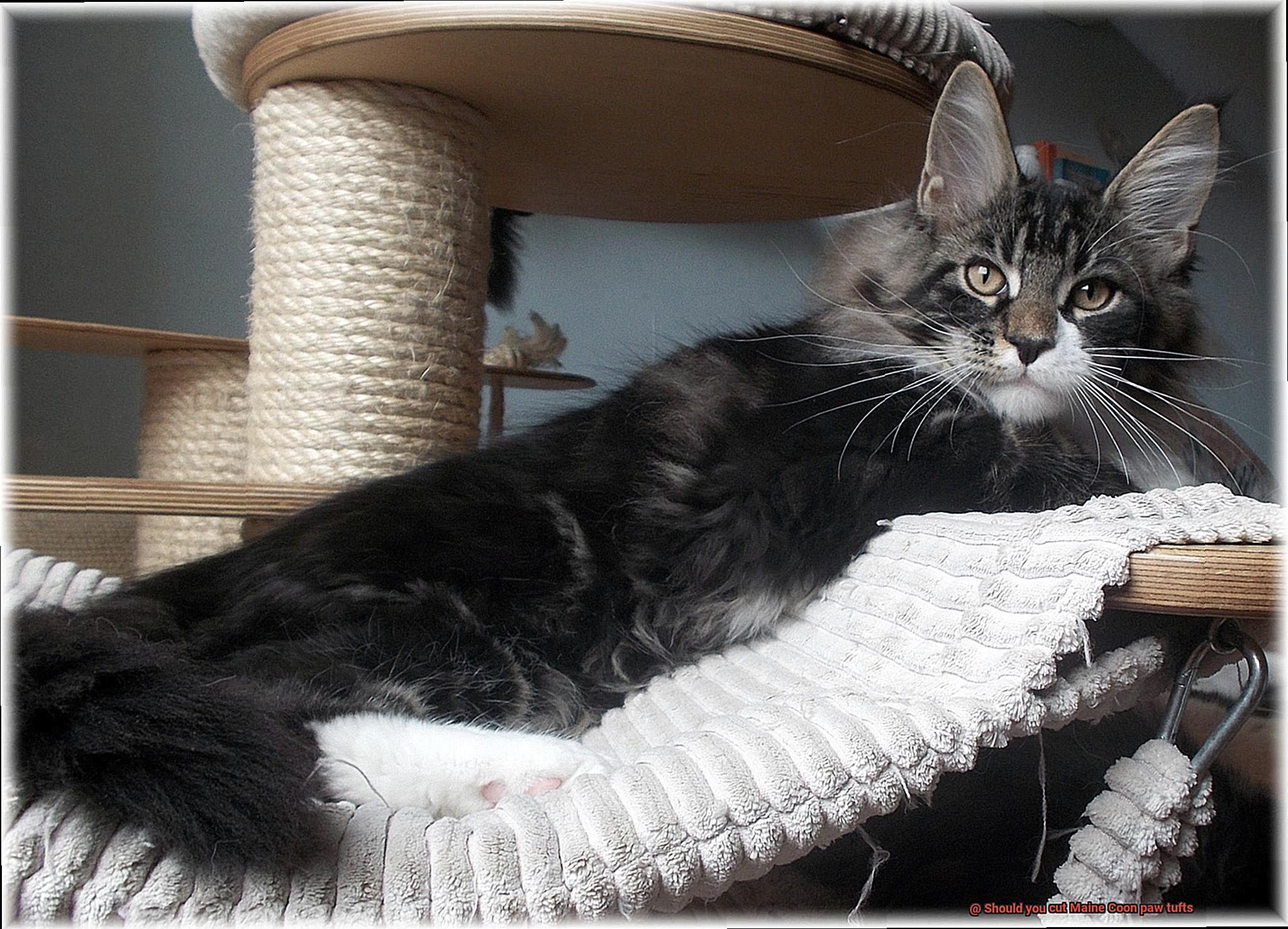
b. Why Do Cats Have Paw Tufts?
These “toe tufts” or “foot tufts” are not just there for show – they provide insulation, protection, grooming, and sensory perception for your feline friend.
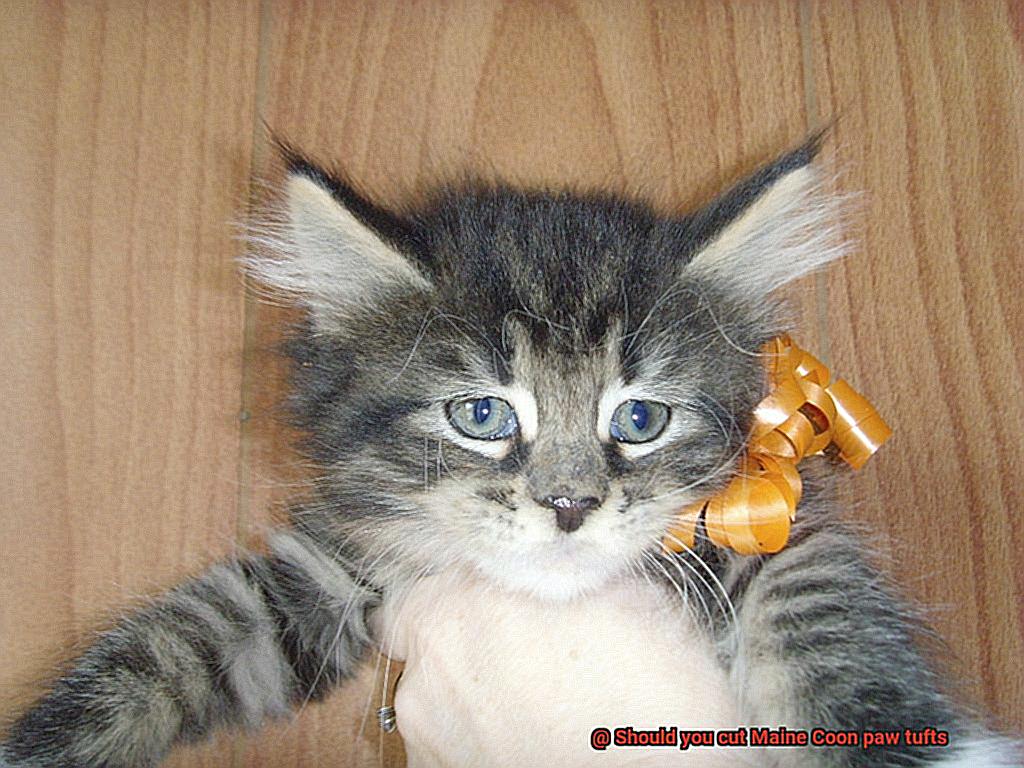
Maine Coon cats were originally bred to survive in cold environments, and their paw tufts help keep their paws warm and protected from harsh elements. Plus, the extra fur provides additional grip and traction when walking on slippery surfaces. So whether your cat is exploring the great outdoors or lounging on your carpet, they’ll have the stability they need.
But wait, there’s more. These paw tufts also help with grooming. As we all know, cats are known for their fastidious cleaning habits, and paw tufts are no exception. They trap dirt and debris, preventing it from making its way up to their legs and body. Your cat can stay clean and healthy with these helpful tufts.
Lastly, these toe tufts can serve as sensory organs for cats. The nerves in a cat’s paws are incredibly sensitive, and the extra fur can help them detect changes in their environment like vibrations or changes in temperature. This can be especially useful for outdoor cats who need to be aware of potential predators or prey. With their paw tufts, your cat can stay alert and safe.
Reasons Not to Cut Maine Coon Paw Tufts
Maine Coon cats are famous for their distinctive physical features, including their large size, fluffy tails, and most notably, their paw tufts. These tufts of fur that grow between the Maine Coon’s toes are not only adorable but also serve a practical purpose. As an expert in all things Maine Coon, I am here to explain why it is important to consider all factors before making a decision about whether or not to cut your cat’s paw tufts.
Protects and Insulates the Paws
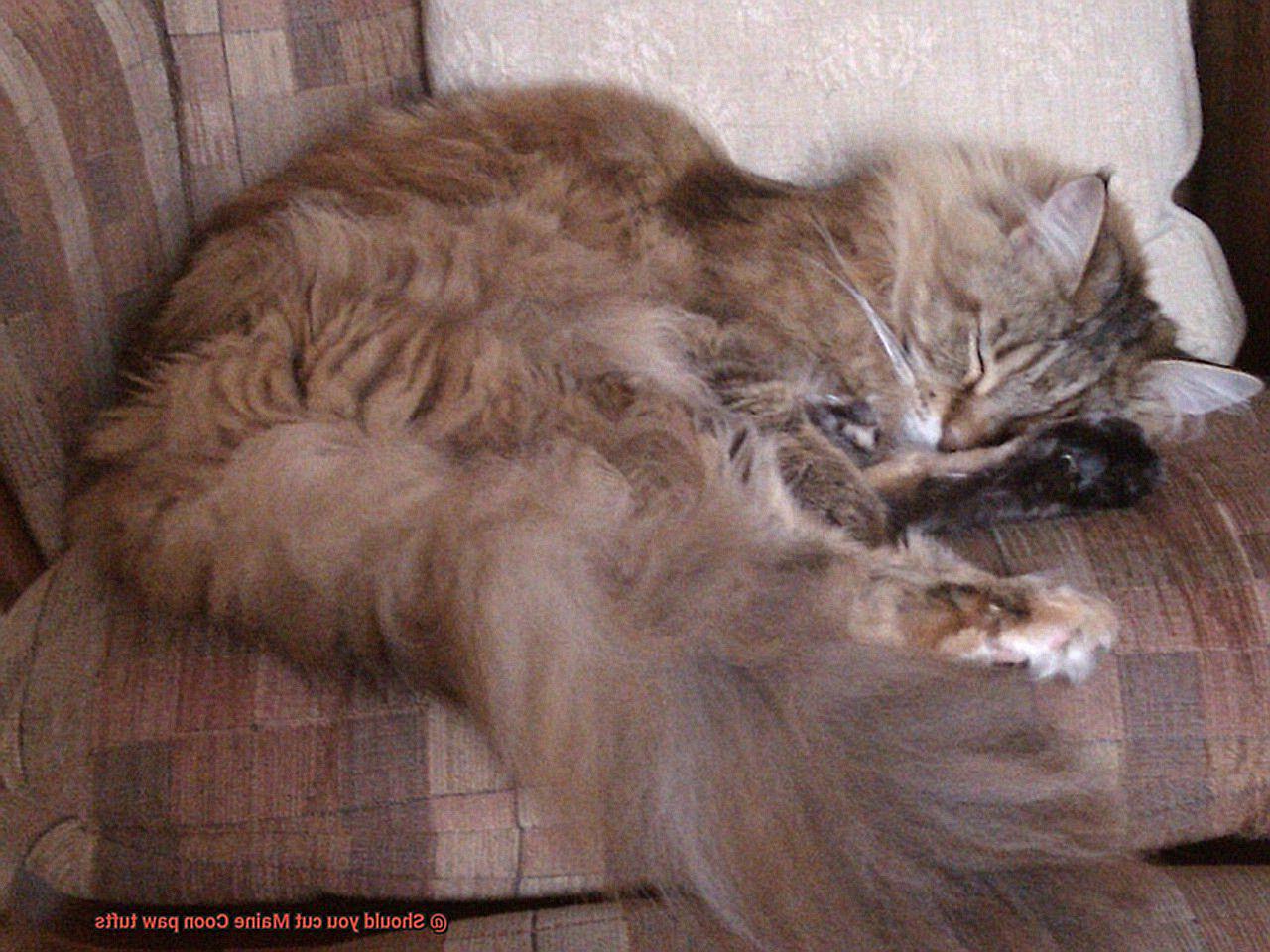
One of the main reasons not to cut Maine Coon paw tufts is that they provide insulation and protection for your cat’s paws. These tufts act as natural snowshoes, helping your cat navigate through snowy terrain without getting cold or wet feet. Additionally, paw tufts protect your cat’s paws from sharp rocks or debris that could cause injury. By cutting the paw tufts, you are leaving your cat’s paws exposed and vulnerable to injury or discomfort.
Plays a Crucial Role in Grooming
Another reason not to cut Maine Coon paw tufts is that they play a crucial role in your cat’s grooming routine. These tufts of fur help to remove dirt and debris from your cat’s paws, preventing infections and other health issues. Without these tufts, your Maine Coon would need more frequent grooming to keep their paws clean. Keeping the paw tufts intact can save you time and effort when grooming your cat.
Can be Painful for Your Cat
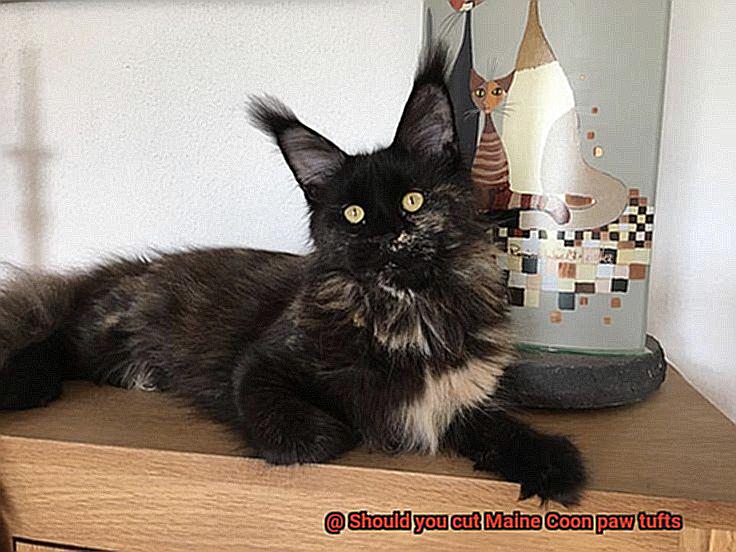
Cutting Maine Coon paw tufts can also be painful for your cat. The skin on a cat’s paw is delicate and sensitive, and cutting the tufts can cause discomfort or even pain. Additionally, cutting the paw tufts too short can lead to ingrown hairs or other skin irritations. It is important to remember that cats are individuals with their own preferences and needs, and not all cats will tolerate having their paw tufts cut.
Essential to Breed Standards
Lastly, many Maine Coon owners simply love the unique appearance of their cat’s paw tufts and consider them an essential part of their pet’s appearance. Cutting them off would detract from the breed’s distinctive features and may even affect their eligibility for cat shows. If you plan on showing your Maine Coon, it is important to keep their paw tufts intact.
Potential Discomfort and Pain for the Cat
However, cutting or shaving their paw tufts may not be the best way to achieve this. Not only can it cause discomfort and pain for our furry friends, but it can also lead to potential health risks.
When it comes to Maine Coon paw tufts, it’s important to consider their purpose. These small tufts of fur serve a functional purpose for cats by providing traction and stability when walking or running on slippery surfaces. Removing them can make it difficult for cats to maintain their balance, leading to an increased risk of slipping and falling and causing further discomfort.
Furthermore, cutting or shaving these tufts can be painful for cats if done improperly. The area between their paw pads is sensitive and contains nerves and blood vessels. Cutting too close to the skin can cause pain and even bleeding, leading to discomfort and potential infection.
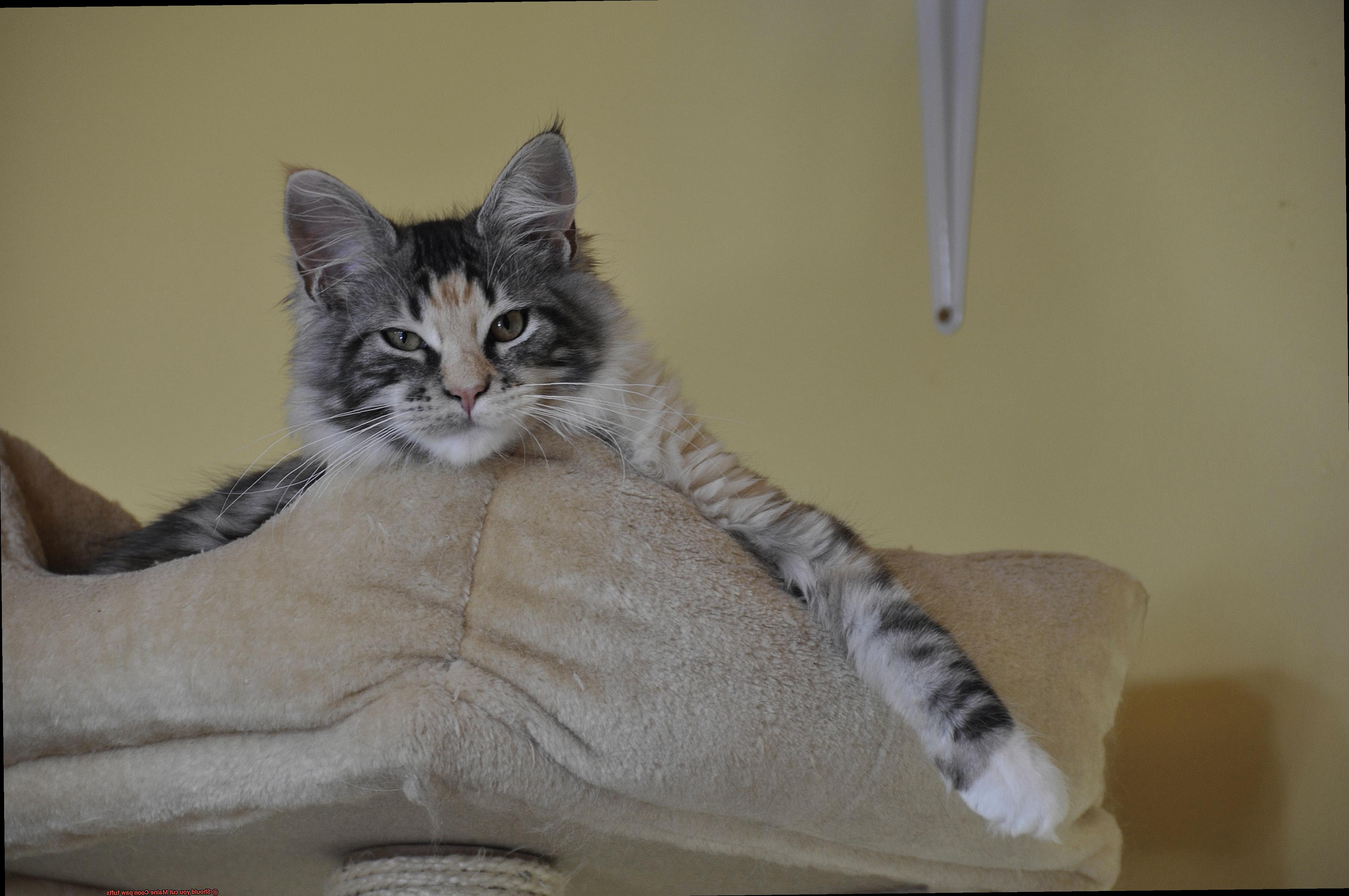
It’s important to note that Maine Coons are known for having thick fur which can make it difficult for cat owners to see where they are cutting. This increases the likelihood of accidentally cutting too close to the skin or causing other injuries.
Risk of Injury or Infection
One grooming task that may come to mind is trimming your cat’s paw tufts. However, before you grab the scissors, it’s important to understand the potential risks involved.
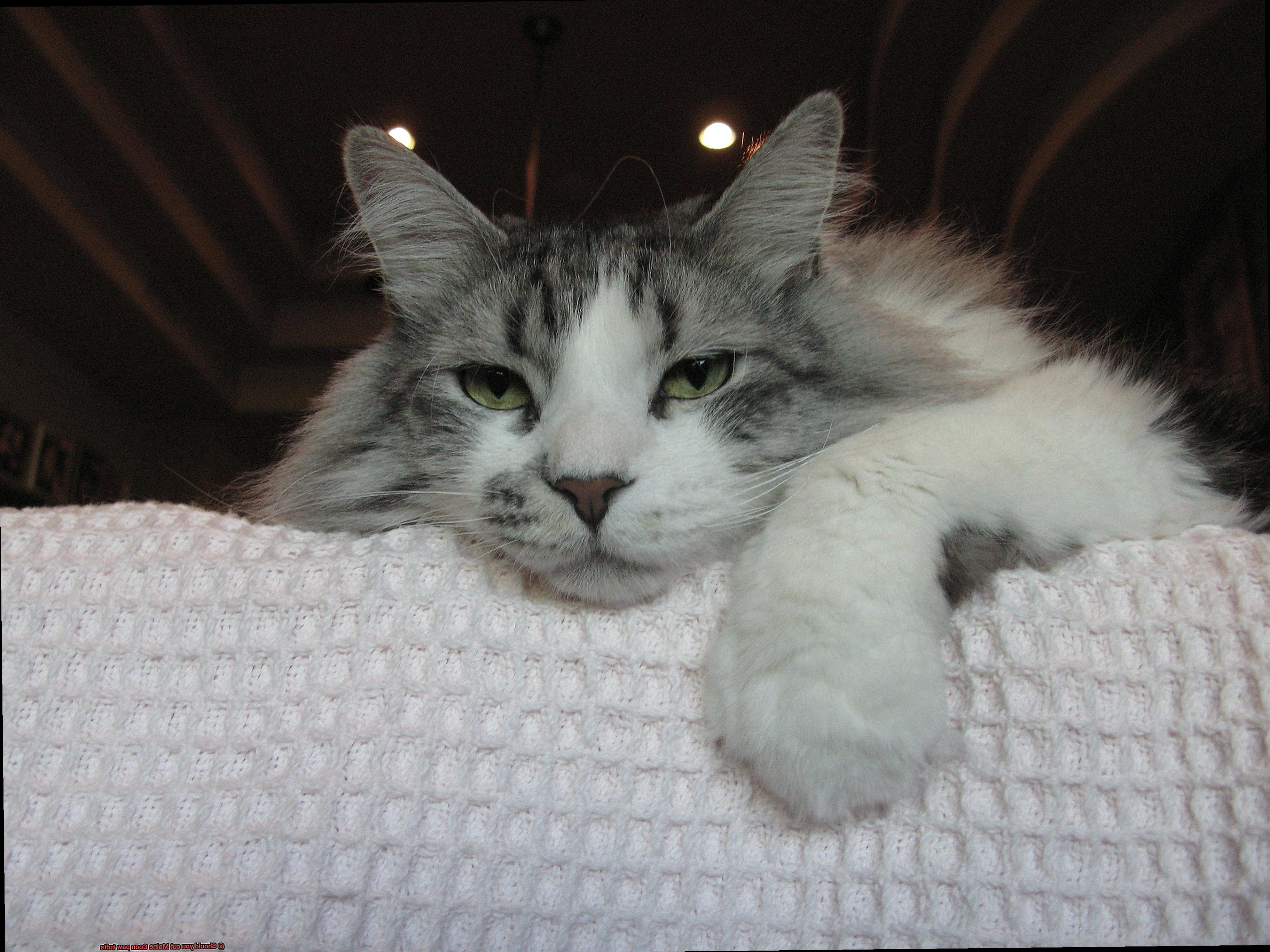
Maine Coon paw tufts serve an important purpose in protecting your cat’s paws from various environmental factors. They provide traction and stability for your cat’s movements, making it easier for them to walk, run and play. However, if you decide to trim these tufts, there is a risk of injury or infection.
Cutting the tufts too short can lead to cuts, bruises, and abrasions on the paw pads, causing pain and discomfort for your furry friend. Moreover, removing too much fur can expose the paw pads to bacteria and other pathogens, increasing the risk of infection.
To avoid such risks, it’s essential to seek professional guidance before trimming your cat’s paw tufts. Not all Maine Coons require trimming as some cats naturally shed their tufts over time. If trimming is necessary due to discomfort or difficulty walking, a professional groomer or veterinarian can safely trim them without causing harm.
Grooming Tips to Maintain Healthy Fur
Maintaining your Maine Coon’s paw tufts is an essential part of their overall grooming routine. Paw tufts are the long hairs that grow out from between a cat’s paw pads, providing insulation and helping the cat maintain its balance. While some owners may be tempted to trim or cut these tufts for aesthetic reasons or to prevent matting, it is important to consider both the pros and cons before taking action.
The Pros of Trimming Paw Tufts
One potential benefit of trimming paw tufts is that it can help prevent matting and discomfort for the cat. As paw tufts are constantly in contact with surfaces, they can easily become tangled or dirty. Trimming them can reduce the risk of matting and make it easier to keep the cat’s paws clean.
Additionally, trimming the paw tufts can also help with hygiene. Maine Coons are known for their fluffy fur, which can easily trap dirt and debris. By keeping their paw tufts trimmed, you can help reduce the amount of dirt and debris your cat tracks into your home, which can make cleaning up after them easier.
The Cons of Trimming Paw Tufts
On the flip side, cutting the paw tufts can cause discomfort and even pain for the cat. These tufts of fur between their toes act as insulation and help the cats grip surfaces better. Removing them can also increase the risk of injury or infection for the cat.
Furthermore, trimming paw tufts too short can lead to other issues such as ingrown hairs or skin irritation. This is especially true if you use dull scissors or trimmers that pull on the fur instead of cutting it cleanly.
Brushing Their Fur Daily
Maintaining the health and happiness of your Maine Coon cat is essential, and daily brushing of their thick fur is a vital part of their grooming routine. Regular brushing prevents matting and hairballs, keeping your feline friend healthy and comfortable.
Maine Coons are distinguished by their paw tufts, which are long hairs that grow between their toes. These tufts serve an important purpose in helping them navigate through snow and providing extra insulation during cold weather. Cutting or trimming them is not recommended, as they protect your cat’s paws from extreme temperatures and rough surfaces.
Instead, use a gentle comb or slicker brush to remove dirt or debris from the paw tufts. This ensures they remain clean without compromising their functionality.
Daily grooming of your Maine Coon’s fur promotes emotional well-being and creates a bonding experience between you and your furry companion. It shows them the love and care they deserve, making them happy and content.
Regular Visits to Professional Groomers
Daily at-home grooming is important, but sometimes it’s not enough to keep your feline friend looking their best. That’s where regular visits to a professional groomer come in handy.
One particular aspect of Maine Coon grooming that often sparks debate is whether or not to cut their paw tufts. These long hairs that grow between their toes add to the breed’s distinctive appearance, but they can become troublesome when they become matted or tangled. If you’re considering trimming your Maine Coon’s paw tufts, it’s important to do so carefully and correctly. This is where a skilled groomer comes in.
During a grooming session, the groomer will meticulously comb through your cat’s fur and identify any areas where matting or tangling has occurred. They will then use specialized tools like scissors or clippers to trim the paw tufts down to a manageable length, without causing any harm or discomfort to your cat. They may also use thinning or blending techniques to create a natural-looking finish.
But that’s not all – a professional groomer can also provide other essential grooming services for your Maine Coon, such as brushing out their coat, trimming their nails, cleaning their ears, and even giving them a bath if necessary. These services not only keep your cat looking their best, but they also prevent potential health issues from arising.
Regular visits to a groomer ensure that your Maine Coon receives the best possible care from someone who knows how to handle their unique grooming needs. A groomer experienced with Maine Coons can provide invaluable advice on grooming techniques and products that are tailored to your cat’s individual needs.
Alternatives to Cutting Maine Coon Paw Tufts
However, you may be considering cutting or trimming these delicate fur tufts for reasons such as hygiene or to prevent matting. But, before you pick up the scissors, it’s essential to know that there are alternatives to cutting Maine Coon paw tufts that can help you maintain your cat’s unique look without causing any harm or discomfort.
Regular grooming is an excellent alternative to cutting Maine Coon paw tufts. Combing and brushing your cat’s paw tufts regularly can prevent matting and tangling of the fur, which is often the reason why pet owners opt for cutting paw tufts. Using a slicker brush or a wide-tooth comb will help distribute natural oils throughout the fur, keeping it healthy and shiny while also preventing tangles.
Another alternative is to keep your cat’s nails trimmed regularly. Long nails can become entangled in the fur, leading to matting and discomfort for your cat. Trimming your cat’s nails every few weeks will also prevent them from scratching themselves accidentally while trying to remove any tangled fur from their paws.
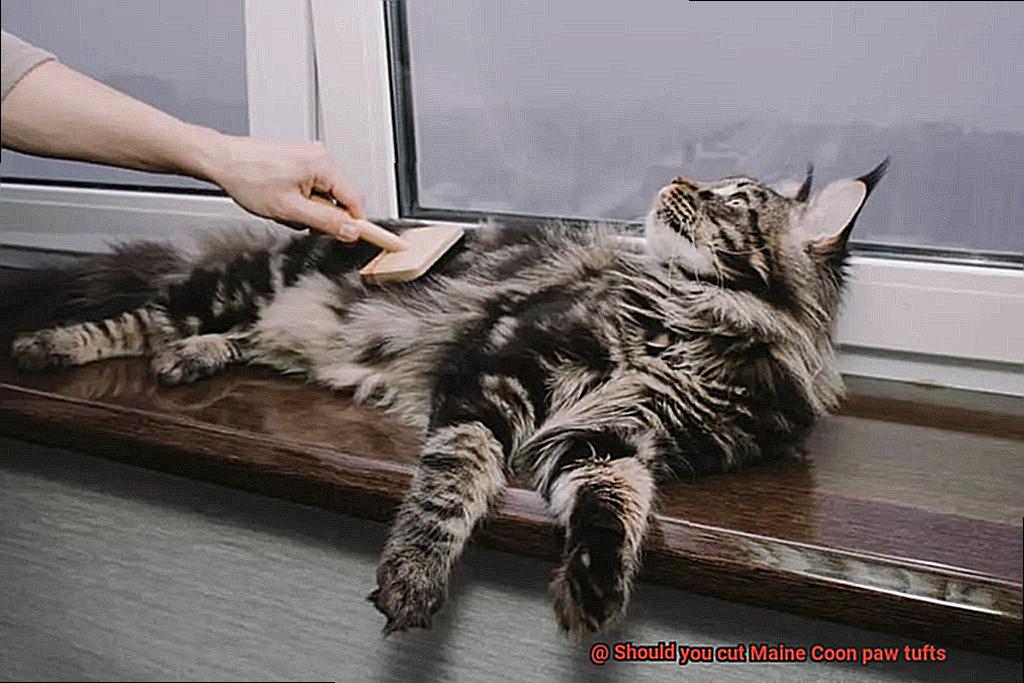
If you find that your cat’s paw tufts are prone to matting, using a detangling spray or conditioner specifically designed for cats can help. These products can loosen any knots or tangles in the fur, making it easier to comb or brush through without resorting to cutting.
Lastly, if you’re still considering cutting your Maine Coon cat’s paw tufts, it’s essential to consult with a professional groomer or veterinarian first. They can advise you on the best course of action and ensure that the paw tufts are trimmed safely and without causing any harm to your cat.
Conclusion
To sum it up, Maine Coon paw tufts are a vital aspect of this breed that serve a significant purpose in keeping their paws warm and providing extra traction. As pet owners, we want to take care of our furry friends, but when it comes to cutting these unique features, there’s no one-size-fits-all answer.
While some believe trimming paw tufts can prevent hairballs and matting, others argue that it’s unnecessary and even harmful. Cutting or shaving the fur can cause discomfort and pain for cats if not done correctly, leading to potential health risks such as injury or infection.
Instead of resorting to drastic measures like cutting or shaving, regular grooming is the best alternative. Daily brushing with a slicker brush or wide-tooth comb can prevent matting and tangling while distributing natural oils throughout the coat. Keeping your cat’s nails trimmed regularly can also help avoid entanglement in the fur.
If you’re still considering cutting your Maine Coon cat’s paw tufts, consult with a professional groomer or veterinarian first. They can provide expert advice on how to trim them safely without causing any harm to your feline friend.

